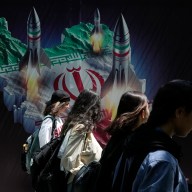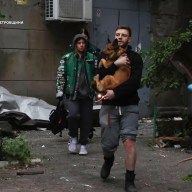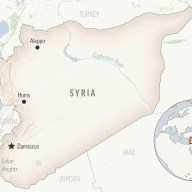COLOMBO, Sri Lanka – An all-night artillery barrage in Sri Lanka’s war zone killed at least 378 civilians and forced thousands to flee to makeshift shelters along the beach, a government doctor said Sunday.
At least 1,100 people were wounded in what the physician said was the bloodiest day he had seen in months of fighting between the army and Tamil Tiger rebels.
Dr. V. Shanmugarajah said many more were likely killed in the barrage, but they were buried where they fell instead of being taken to the makeshift hospital where he works in the war zone. He described the situation at the understaffed hospital as “overwhelming.”
“Nothing is within our control,” he said. Most doctors and nurses have long since fled, he said, and even volunteers to dig graves were in short supply.
The rebel-linked TamilNet website said 2,000 civilians were feared dead and blamed the attack on Sri Lankan forces. The Sri Lankan military denied firing the artillery and said the rebels appeared to be firing mortar shells from one corner of the tiny area still under their control into another section densely populated with civilians.
The rebels are “trying to use these people as their last weapon to show the world that the army is firing indiscriminately and stop this offensive,” military spokesman Brig. Udaya Nanayakkara said.
Reports of the fighting are difficult to verify because the government bars journalists and aid workers from the war zone. The rebel force, which has been fighting for 25 years for a homeland for minority Tamils, is cornered on a small sliver of territory on the island’s northeastern coast.
The government vowed two weeks ago to cease firing heavy weapons to avoid civilian casualties. However, medical officials in the area have reported that air strikes and artillery attacks have continued unabated, despite the presence of an estimated 50,000 ethnic Tamil civilians in the conflict zone.
In the overnight attack, Shanmugarajah said, shells flew through the air, some falling near the hospital, sending many diving into bunkers for safety.
He said at least 378 civilians were killed, and the hospital was struggling to cope with the 1,122 wounded civilians.
The government had sent medical supplies into the war zone in the past days, but a shortage of physicians, nurses and aides has made treatment difficult, he said.
“We are doing the first aid and some surgeries as quickly as we can. We are doing what is possible. The situation is overwhelming,” he said.
Human Rights Watch on Saturday accused the military of repeatedly hitting hospitals in the war zone with artillery and aerial attacks that killed scores of people and said commanders involved in the attacks “may be prosecuted for war crimes.”
UN figures compiled last month showed that nearly 6,500 civilians had been killed early this year as the government renewed its efforts to end the war.
In recent months, government forces pushed the rebels out of the shadow state they controlled across a wide swath of the north and cornered them in the tiny spit of land the army says is just four kilometres long where the fighting is now concentrated.
The government has brushed off international calls for a humanitarian ceasefire, saying the rebels would use any pause in fighting to regroup.
The rebels have been fighting since 1983 for a separate state for minority Tamils, who have suffered decades of marginalization at the hands of governments controlled by the Sinhalese majority.
The government has accused the rebels of using civilians in the north as human shields, and Nanayakkara said the insurgents shot families who tried to escape the war zone Saturday, killing nine people.
Meanwhile, pressure on reporters critical of the government’s war effort has intensified.
On Sunday, Sri Lanka deported three journalists for London-based Channel 4 television news. They had been arrested the day before on charges of tarnishing the image of the security forces after they ran a report about the conditions of the war refugees and alleged sexual abuse in displacement camps, which the government denied.
Lakshman Hulugalle, the head of the government security information centre, said the journalists admitted they had “done something wrong” and would not be allowed to come back to Sri Lanka.
However, Nick Paton-Walsh, the channel’s Asia correspondent, denied giving a statement to police or admitting wrongdoing.
“This is complete rubbish,” he told The Associated Press from Singapore after his deportation.
Media rights groups have said the government’s military success has been accompanied by a ruthless campaign against dissenting media.
According to Amnesty International, at least 14 local journalists and Sri Lankans working for media organizations have been killed since the beginning of 2006. Others have been detained, tortured or have disappeared. Amnesty says 20 more have fled the country because of death threats.
















